We’ve been busy preparing for the test campaign of the UoS3 over the summer. To help with this task and realise our educational mission at the same time, we were working with two interns, Denisa and Ben. They have just finished the second year of their undergraduate courses at the University of Southampton. Denisa studies […]
About Aleksander Lidtke
Author Archive | Aleksander Lidtke
European Workshop on Microelectronics Education 2016
We had the pleasure to present a paper at the European Workshop on Microelectronics Education. It gives an overview of how to run large, multidisciplinary projects, such as UoS3, in a university environment. In short, it isn’t easy. However, the audience agreed that this sort of projects are crucial to educate good engineers for the future. What […]
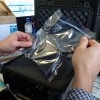
Battery arrives
Our Clyde Space battery has been delivered! It came in a large and rather heavy parcel: As I was carrying it into the office to see what’s in it I was wondering how they managed to make the battery, which fits into a 10 by 10 cm cubesat envelope, so heavy. Turns out the battery came […]
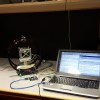
Testing and calibrating the magnetometer
The attitude control subsystem (ACS) on-board the UoS3 uses a permanent magnet to align one of the satellite’s axes with Earth’s local magnetic field. Such a solution does not any consume any energy, which is a scarce resource on a cubesat. Especially when flying a power-hungry GNSS receiver. However, in order to fulfil our scientific […]
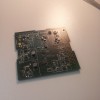
Power subsystem PCB manufactured
We finished our power subsystem printed circuit board (PCB)! It’s the first complete piece of UoS3 electronics that we made in-house, so it’s a big moment for us. This board houses all the components that take part in distributing the power on board the satellite. This is to say this board gathers the energy from […]
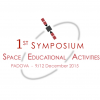
1st Symposium on Space Educational Activities
We presented our work on the UoS3 at the 1st Symposium on Space Educational Activities. It was a workshop that brought together leading European institutions that provide education in the field of Space Engineering. As such, it provided a great opportunity to exchange experiences both regarding cubesat design, manufacture and operations, as well as how […]
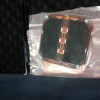
Solar panel delivery
Today is a big day for us and UoS3 – we received two of our solar panels today! They were manufactured by DHV Technology, a Spanish company that has been working with us to design and build custom-made solar panels that will fit into our cubesat. So far we only bought two of these because […]
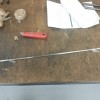
Putting attitude control subsystem together
The way we stabilise the satellite is fully passive – we use Earth’s magnetic field to do the job for us. What ensures the camera and antennae on board the spacecraft are directed towards the Earth surface (i.e. are pointed at the nadir) is a permanent magnet. This magnet aligns itself with the local magnetic […]
Designing the power subsystem
One group of our electronics students from the ECS department at the University is designing the power subsystem of UoS3. The subsystem comprises of all the components that will gather the energy from the solar panels, deliver it to the loads at the voltage they need, and store the excess in the batteries to be […]
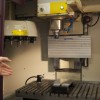
First cut
We spent months designing the structure for our CubeSat. This process involved primarily trying to fit all the components inside a very small volume while respecting all the requirements imposed by the CubeSat standard. This was not a trivial task, but it has finally been completed. We produced manufacturing drawings from our 3D computer aided […]

